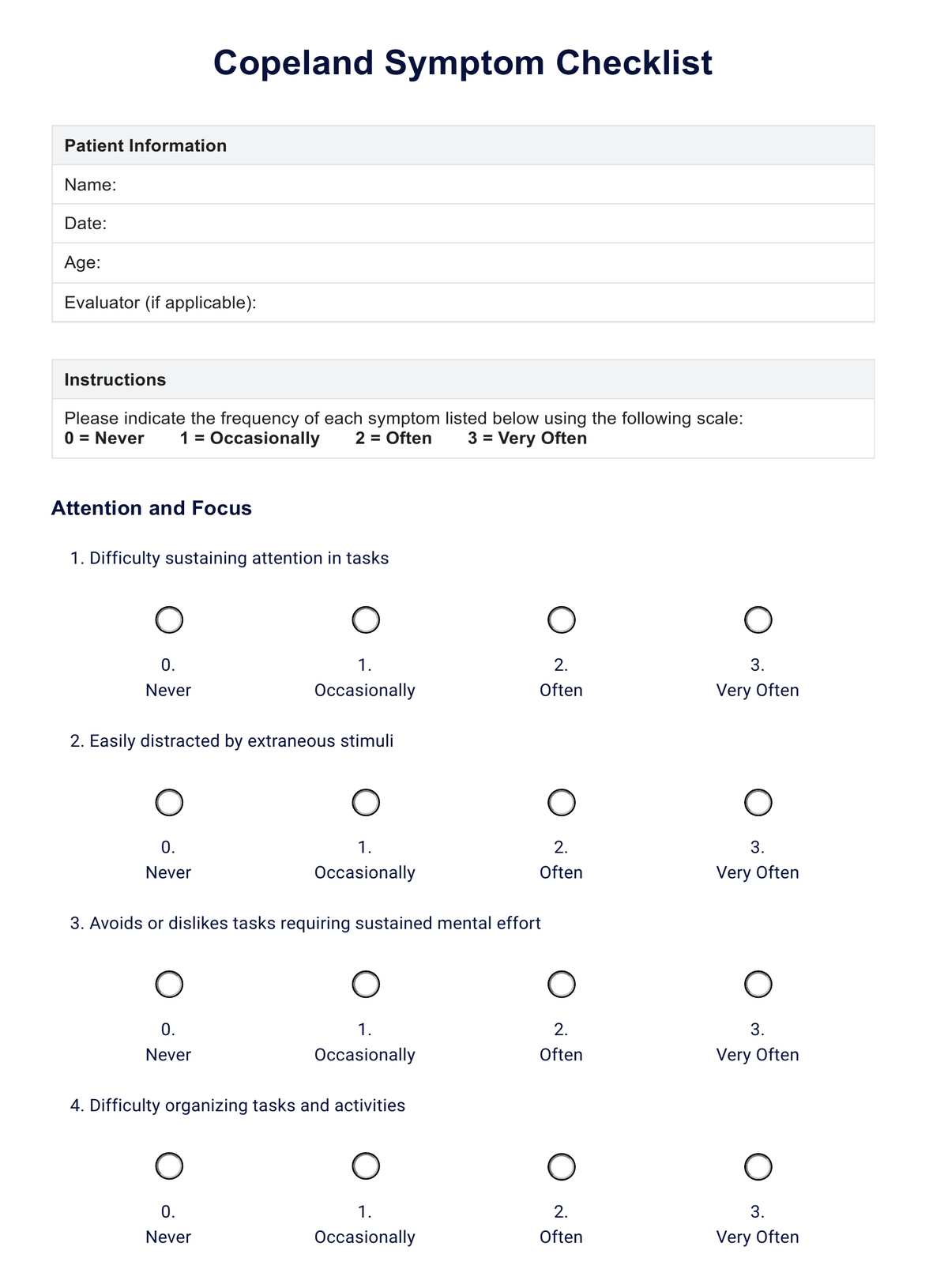The Copeland Symptom Checklist is usually pre-designed and available for use as a standardized tool.

Copeland Symptom Checklist
Streamline ADHD assessments with our Copeland Symptom Checklist Template, which is perfect for accurate and efficient symptom tracking.
Use Template
Copeland Symptom Checklist Template
Commonly asked questions
Copeland Symptom Checklists are used when symptoms of ADD/ADHD are observed in individuals, either by healthcare professionals, educators, or caregivers.
Copeland Symptom Checklists are completed by answering questions about the individual's behaviors and symptoms, followed by scoring and interpretation
EHR and practice management software
Get started for free
*No credit card required
Free
$0/usd
Unlimited clients
Telehealth
1GB of storage
Client portal text
Automated billing and online payments











